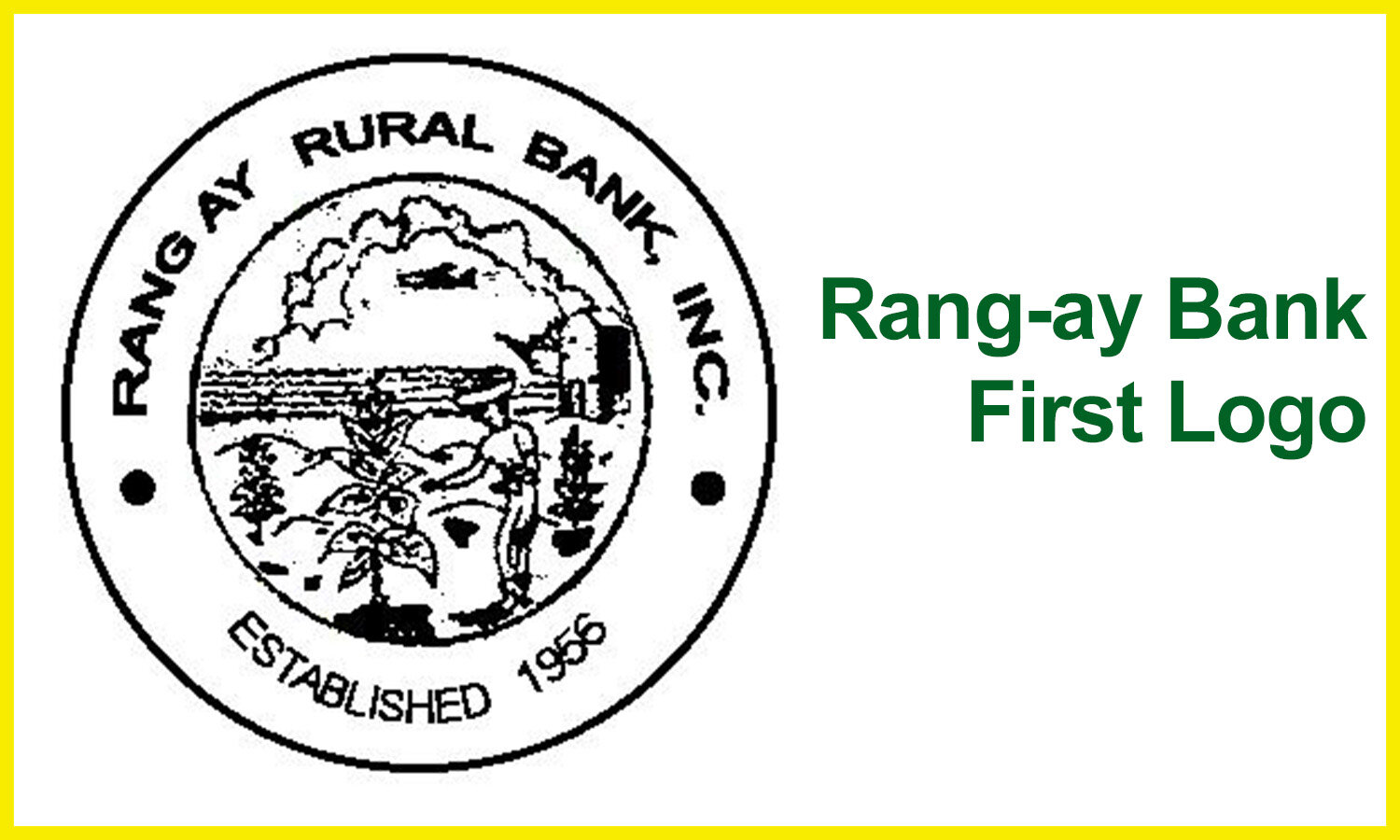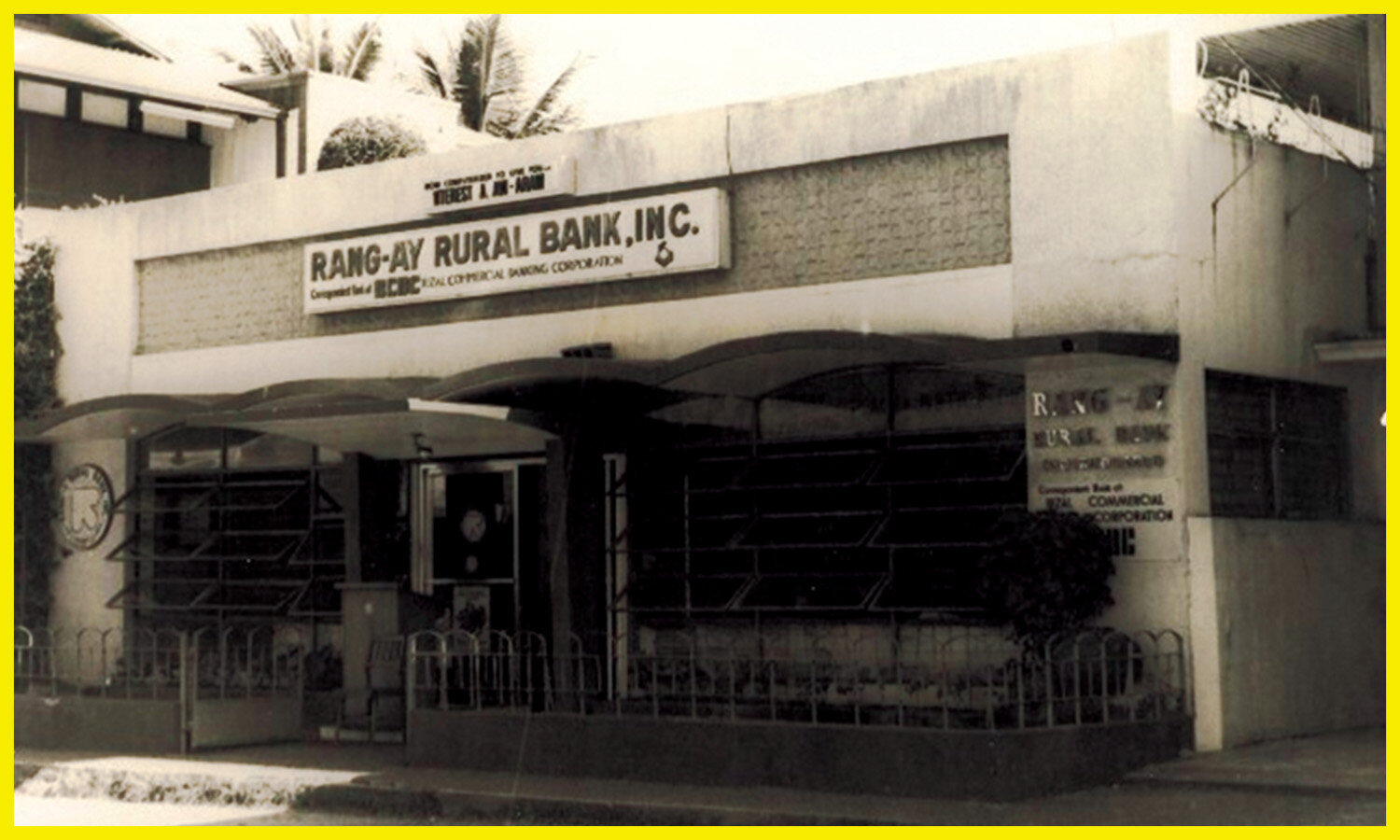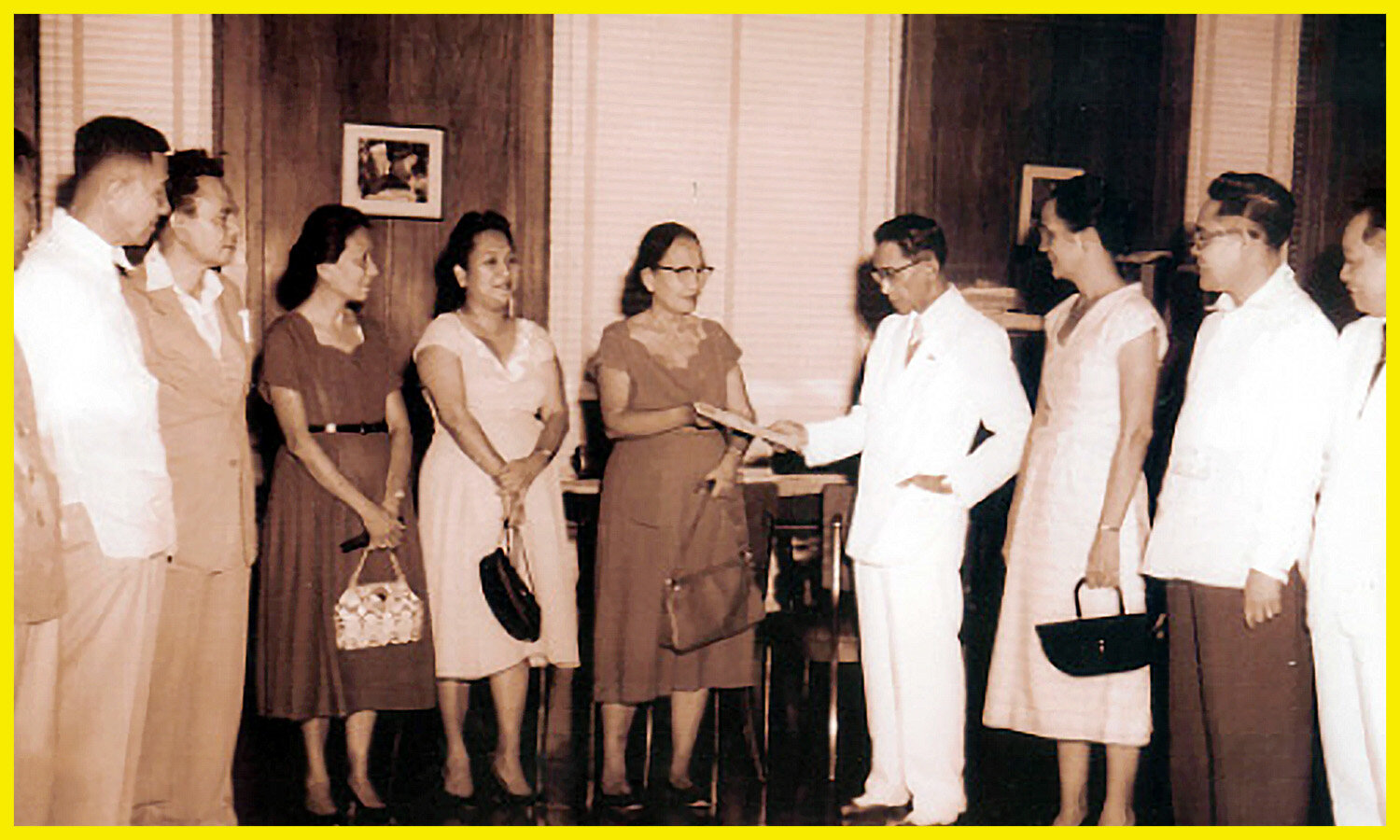




RANG-AY BEGINNINGS
Growing-up Pains
In January 16, 1956, Rang-ay Bank first opened its doors to the public as a duly-established and licensed bank. Its founders were civic-spirited citizen of the region, led by Doña Numeriana “Yanang” Tavora-Querol and Don Teofilo A. Nisce.
Rang-ay started as a single-unit rural bank housed at the ground floor of the old Nisce residence at Governor Luna Street in La Union’s capital town of San Fernando. Across the street was the Oro Theater and row of houses. The former Municipal Hall was located a few meters away where the PNB Branch stands now.
At that time, there was no other private bank in the entire province. The only other existing bank in La Union then was the Philippine National Bank (PNB) – a government-owned bank.
Rang-ay Chair Eufrosina Q. Nisce often recalled, “We started with only four employees. I was the teller-cashier, Lorenzo Flores was our first bookkeeper, my late husband (Atty. Rudy Nisce) was our first manager and Melania Camello was our secretary. We had no security guards.”
Just like other banks, Rang-ay experienced growing-up pains in the early years. “During the first year, it was hard convince people to deposit their money in our bank. We overcame this difficulty by capitalizing on the good name of our parents, “ Mrs. Nisce said. Her late father, Dr. Antonio Querol, a native of Vigan, Ilocos Sur, was the first municipal doctor of San Fernando while Doña Yanang, her mother, was a highly respected influential woman from Agoo. Her husband also belonged to the prominent Nisce clan of Luna.
Those who have come to know banking as a purely business transaction may find it odd to know what banking was in the late 50s and early 60s. Mrs. Nisce narrated how depositors from nearby barrios and other towns would barge into the bank’s premises carrying large bayongs (native bags) laden with fish, vegetables and even live chicken. Some of them would even entrust their belongings with the bank staff, who also regarded them as their “suki” (valued regular client).
“Since the bank is located just below our family house, some client would come to the house to deposit their money even after office hours,” she said.
The bank’s Chair noted that it was not hard to collect from farmers then and that repayment of agricultural loans was a lot easier. “The average loan was P 500.00,” she said.
Her brother-in-law ,Atty. Ramon Nisce, a stockholder of the bank, attributed this to the boom in the Virginia tobacco industry at that time. “In early years, I used to manage the bank in my brother’s absence. I remember that during those years, tobacco was a sunrise industry and the government was providing substantial subsidy to Virginia tobacco farmers,” he recalled.
No security guards, no collectors
Aside from having no security guards, Rang-ay also had no collector, inspector and appraiser. Jose Lavaro, the bank’s very first driver, remembers how he and his boss, Atty. Rudy Nisce, would go around in the afternoon to collect payment from borrowers after attending to his managerial functions at the bank in the morning.
The bank had to hire more and more people as its number of depositors and borrowers grew. In 1962, Rang-ay moved to a more spacious one-storey building near its original site.
That same year, it was granted the authority to accept demand deposits, making it one of the first rural banks to offer such facility. Ten years later, the Central Bank authorized the bank to act as a foreign exchange dealer, enabling it to cater to the needs of the growing number of overseas contract workers and local residents whose family members have migrated to the United States and other countries.
Support for government financing programs for farmers and SMEs
From the very start, Rang-ay has been very supportive of government financing programs, especially those designed to deliver credit to farmers, merchants, and small and medium entrepreneurs. In 1972, Rang-ay was among the earliest participants in the government’s Agricultural Loan Fund (ALF) Program. The following year, it pioneered the Masagana 99 and the Masaganang Maisan Production Programs and two years later, it led in the implementation of the Integrated Agricultural Farming (IAF) Program of the Department of Agriculture (DA).
Meanwhile, the bank was also assisting small and medium entrepreneurs, becoming one of the leading financial institutions granting loans to SME’s under the Industrial Guarantee Loan Fund (IGLF) in 1974.
In 1975, Rang-ay Bank was awarded as one of the “Outstanding Rural Banks of the Year” by the Central Bank for its operational efficiency, adherence to sound banking practices as well as having achieved substantial growth rates.
Branching Out
Rang-ay started branching out way back in January 1976 when it opened its first extension office at the site of what is now known as the Old Market of San Fernando. It was the very first extension office operated by a rural bank in the Ilocos region.
In October of the same year, Atty. Rudy Nisce retired from active management of the bank. His son, Ives, was only 23 years old when he took over as the duly-elected president and manager and became the youngest rural bank chief executive of his time. The young president infused a new dynamism in the bank’s management and his entry ushered in an unprecedented growth that has propelled Rang-ay to outshine other banks in its class in the Ilocos and Cordillera regions.
Rang-ay Bank was the first rural bank in North Luzon to computerize its operations in 1978. This new technology enabled the bank to compute interest daily without failure or error. An old brochure (circa 1979) describes the bank as a hardworking bank that was “doing more to serve you better.” True enough, Rang-ay was working hard to maintain its competitive edge over the growing number of commercial banks in its area, offering longer banking hours (from 8 am to 4:30 pm) and foregoing the usual lunch break.
With its technological advantage, Rang-ay’s clientele and resources continued to grow. On December 8, 1981, the bank inaugurated its new offices at the newly-contructed Nisce-Querol Building on Governor Luna St. The following year, Rang-ay sought to extend its banking services to those living in the southern towns of La Union by opening a branch in Tubao town. It was the first Rang-ay branch outside San Fernando.
At 66, Rang-ay Bank is the oldest enduring bank in Ilocandia and one of the well established bank in the country, a respected and trustworthy financial institution bringing progress and prosperity to the community. At present the bank has a total of 30 branches in the provinces of Ilocos Norte, Ilocos Sur, Abra, La Union, Benguet and Pangasinan. Continuing to hasten progress in the countryside through accessible and affordable banking services, the bank has become the biggest in Region I and Cordilleras.
Dahil Asenso Mo, Tagumpay ng Rang-ay!



